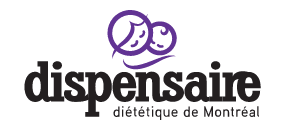Baby-led weaning (BLW) is an approach that encourages babies to eat on their own. Although few studies have been done on this method, scientific evidence suggests that it is a safe approach for children.
What is baby-led weaning?
Baby-led weaning is the practice of offering whole foods (i.e., whole fruits and vegetables, large chunks of meat) rather than pureed foods when children are ready to eat solid foods. The goal? Let the baby manipulate the food and control how much and how fast they eat.
Eating with your fingers for better development
It is recommended to offer a variety of textures to the child as soon as solid foods are introduced, such as minced foods, foods cut into small pieces or foods that the baby can pick up with their fingers. Why? This variety in texture and the ability to manipulate food with the fingers promotes the development of the child’s motor skills without increasing their risk of choking.
There are a few precautions to consider. Babies should be offered pieces of food that are “safe” in size; avoiding small, round foods such as nuts and grapes. Foods should also be soft enough for the infant to chew. In addition, the child should be supervised during feeding.
Advantages of baby-led weaning
Babies that are fed using the “baby-led weaning” approach may be more capable of recognizing their hunger and satiety cues, as they are encouraged to self-determine how much they want to eat at each meal. Studies have shown that children who are fed using the BLW approach have a lower risk of being overweight. However, other studies have found that these children are at risk of not gaining enough weight.
To date, studies on baby-led weaning indicate that there is no increased risk of choking or anemia, a concern often raised by some professionals and parents.
Precautions to take
Baby-led weaning allows babies to eat nearly the same foods as the rest of the family, which makes it easier for parents. The only downside is that the family’s diet may not be appropriate for the baby’s needs (i.e., too high in salt and sugars or too low in iron). Therefore, parents should be encouraged to offer as few processed foods as possible and to select a variety of appropriate foods.
This approach requires that the baby is able to pick up and chew food. This may not be appropriate for a premature baby, a child with significant developmental delay, suboptimal growth or an anatomical disorder (cleft palate or tongue-tie).
The fact is that this approach is interesting and is becoming increasingly popular. However, the limited amount of research on baby-led weaning prevents us from recommending it as a first step in the introduction of solid foods for all infants.






